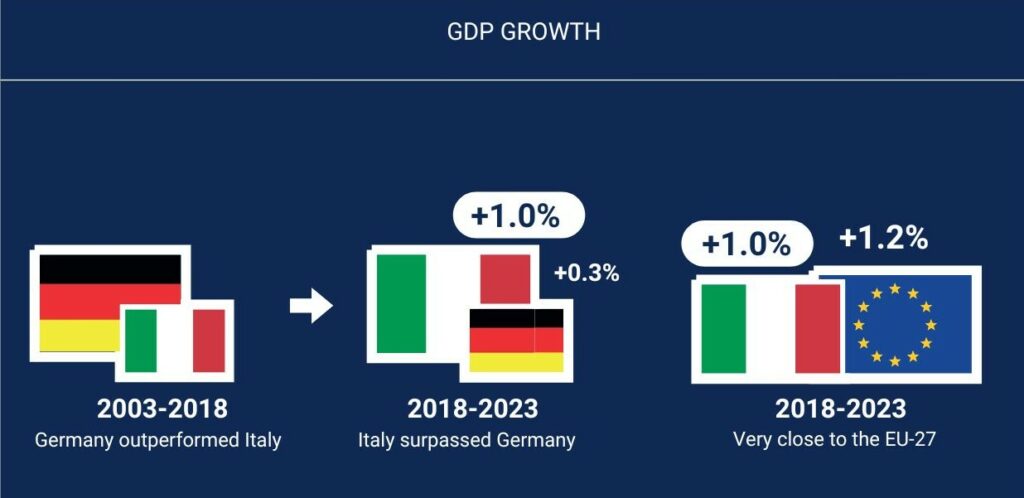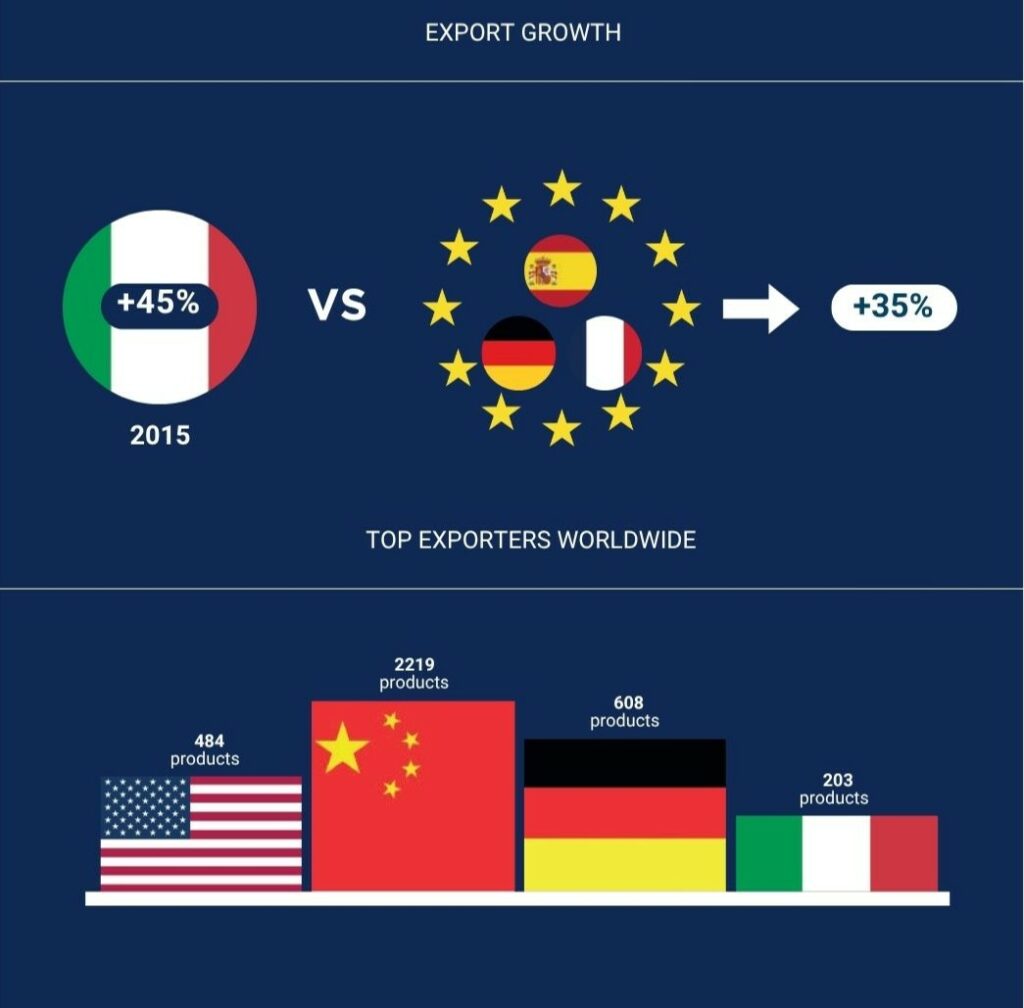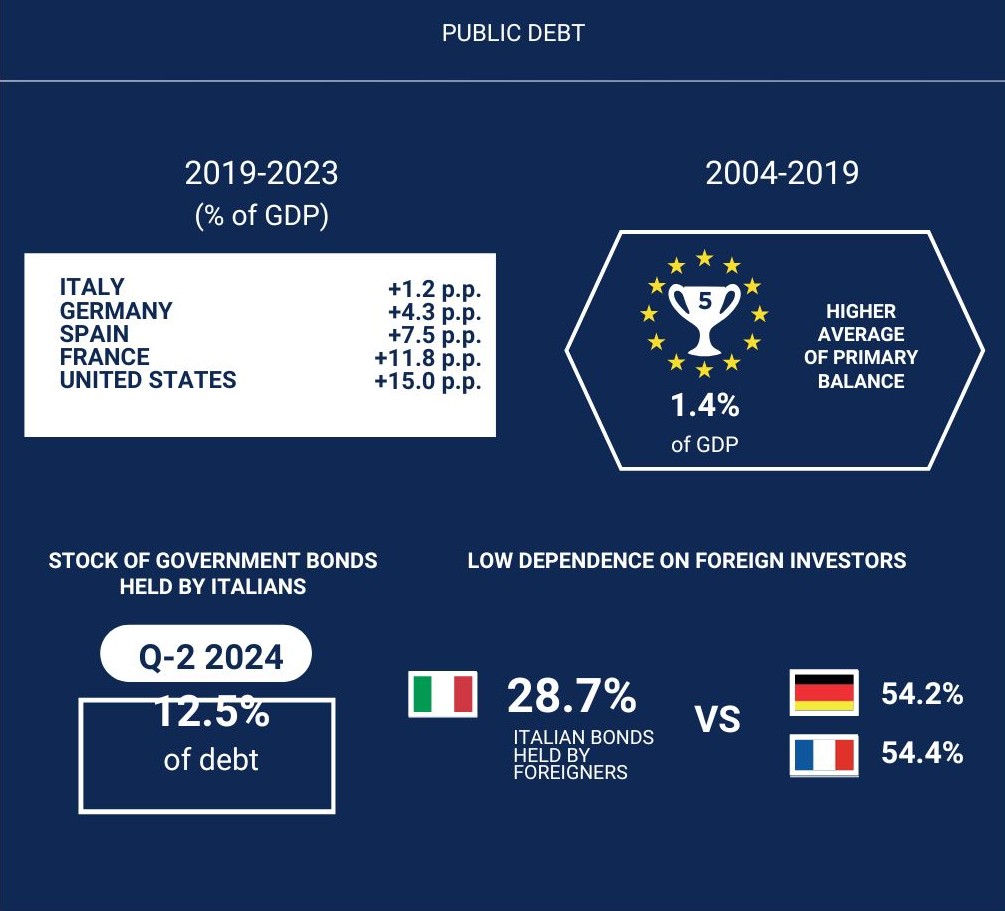
The latest report by Confindustria’s Research Center, Unveiling Italy’s Economic Potential, offers a fresh and evidence-based look at Italy’s economic transformation in recent years. With detailed data and a strategic outlook, the report dismantles persistent stereotypes and highlights the country’s growing strengths, from industrial competitiveness to sustainability and financial resilience.
A New Narrative for Italy’s Economy
For decades, international commentary on Italy’s economy has often focused on stagnation, high debt, and structural inefficiencies. Yet, as the report shows, the Italian economy is undergoing a quiet but substantial shift. Between 2018 and 2023, Italy’s GDP grew by an average of +1.0% per year, outperforming Germany (+0.3%) and reversing a historical trend that had seen Italy lag behind.

Competitiveness, Sustainability and Economic Resilience
This growth is not accidental. Since 2019, productive investments in Italy have increased by +17.8%, far exceeding levels recorded in other large European economies. This reflects renewed business confidence and a broader transformation in the country’s industrial fabric.
At the heart of this shift is Italy’s manufacturing sector, which is now the second largest and most diversified in Europe. Italian manufacturing is not only broad in scope, spanning from precision machinery to fashion, food, and green technologies, but also highly productive and export-oriented. Between 2015 and 2024, exports of goods rose by 45%, strengthening Italy’s international investment position and reinforcing its reputation as a key player in global markets.

Italy’s economic performance is not only strong, it is increasingly sustainable. The country has one of the lowest CO₂ emissions per unit of GDP in the G20, with only 0.12 kg of CO₂ per dollar of GDP produced. This is largely thanks to the efficiency of Italian industry and its growing focus on green innovation.
On the financial side, public accounts remain more stable than often perceived abroad. Despite global crises, from the pandemic to geopolitical shocks, Italy’s public debt has risen by just 1.2 percentage points between 2019 and 2023. Over 70% of this debt is held domestically, which limits exposure to global financial volatility.

Italy’s recent trajectory tells a different story from the one often portrayed in international discourse. As the data clearly show, the country is not only recovering, it is evolving. ith a more dynamic industrial base, greater environmental efficiency, and strengthened financial fundamentals, Italy is positioning itself as an attractive and resilient economic partner on the global stage. This transformation is not just statistical, it is structural, signaling a new chapter for Italy’s economy.
To explore the full analysis and data behind these trends, we invite you to read the complete report